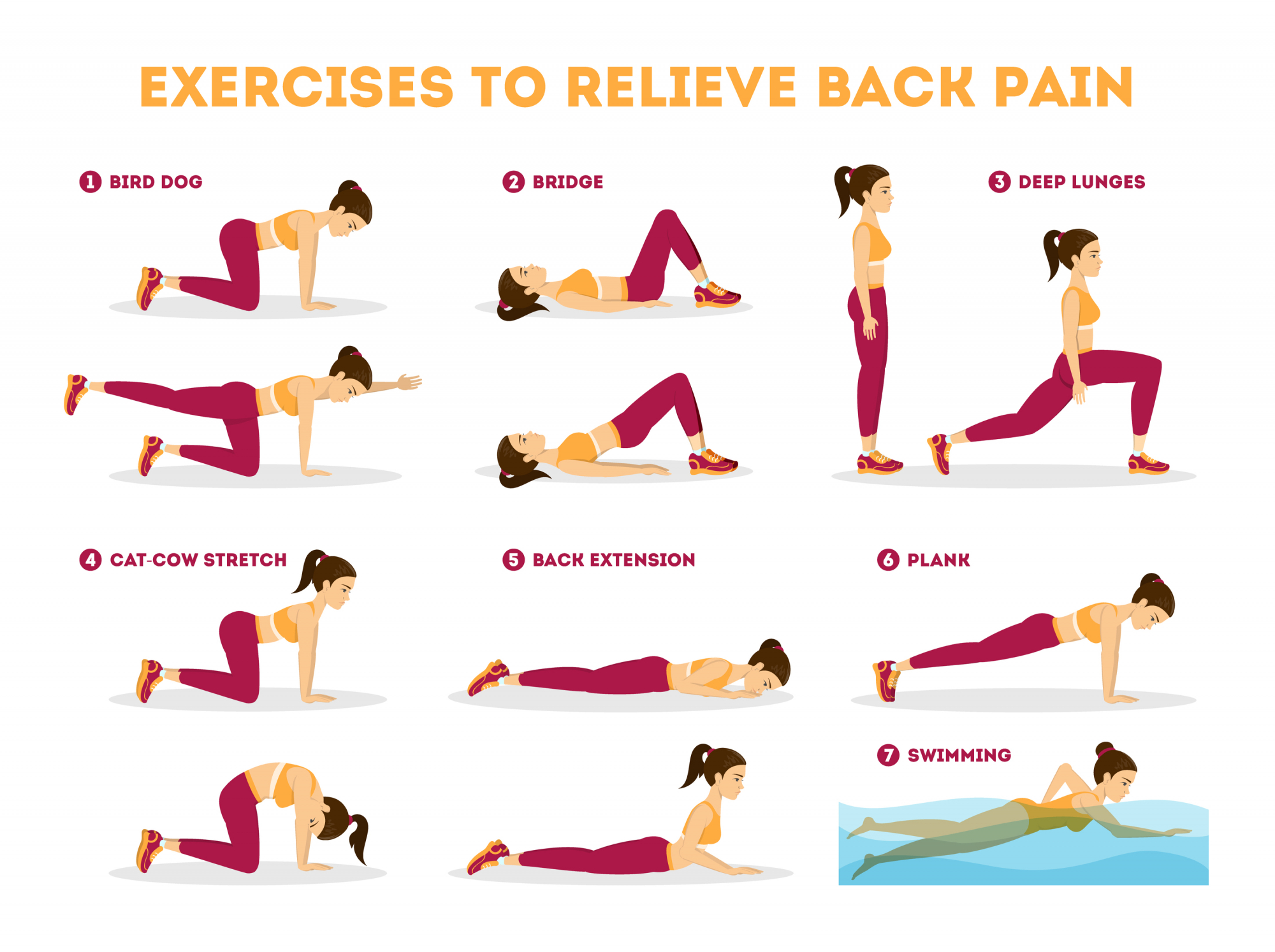
Back pain is a common issue that affects millions of people worldwide. While it can stem from various causes, physical therapy is an effective approach to relieving pain and restoring mobility. In this blog, we’ll explore types of physical therapy exercises that can help alleviate back pain, the benefits of working with a physical therapist, and how to safely perform exercises at home.
Types of Physical Therapy Exercises for Pain Relief
Physical therapy encompasses a wide range of exercises tailored to individual needs. Here are some of the most effective types of exercises that physical therapists often recommend for back pain relief:
1. Stretching Exercises
- Purpose: Stretching helps improve flexibility and reduces tension in the muscles around the spine.
- Examples:
- Cat-Cow Stretch: This yoga pose alternates between arching and rounding the back, promoting spinal flexibility.
- Child’s Pose: A gentle stretch that helps elongate the spine and relieve lower back tension.
2. Strengthening Exercises
- Purpose: Strengthening the core muscles provides better support for the spine, reducing strain on the back.
- Examples:
- Planks: Holding a plank position engages the entire core, stabilizing the spine.
- Bridges: Lying on your back with knees bent, lifting your hips towards the ceiling strengthens the glutes and lower back.
3. Stabilization Exercises
- Purpose: Stabilization exercises enhance the muscles’ ability to support the spine during movement.
- Examples:
- Bird-Dog: This exercise involves extending one arm and the opposite leg while maintaining a neutral spine, promoting balance and coordination.
- Side Planks: Strengthening the oblique muscles helps stabilize the spine during everyday activities.
4. Aerobic Conditioning
- Purpose: Low-impact aerobic exercises improve overall fitness and promote circulation to the back muscles.
- Examples:
- Walking: Simple and effective, walking can improve blood flow and ease stiffness.
- Swimming: The buoyancy of water reduces stress on the back, making swimming an excellent low-impact exercise.
Benefits of Working with a Physical Therapist
While many exercises can be done at home, working with a physical therapist offers several advantages:
1. Personalized Treatment Plans
A physical therapist will assess your specific condition, medical history, and pain levels to develop a tailored exercise program that addresses your unique needs.
2. Proper Guidance and Technique
Therapists provide instruction on proper exercise techniques, ensuring you perform each movement safely and effectively to avoid further injury.
3. Progress Monitoring
Regular sessions allow physical therapists to monitor your progress and make necessary adjustments to your treatment plan, ensuring continued improvement.
4. Education on Pain Management
Physical therapists teach strategies for managing pain and preventing future episodes, empowering you with knowledge to take control of your health.
How to Safely Perform Exercises at Home
If you prefer to exercise at home, follow these safety tips to minimize the risk of injury:
1. Warm Up First
Always begin with a gentle warm-up to prepare your muscles for exercise. Simple activities like marching in place or gentle stretches can help.
2. Listen to Your Body
Pay attention to how your body feels during each exercise. If you experience sharp pain or discomfort, stop immediately and reassess your technique.
3. Start Slowly
If you’re new to exercising or recovering from an injury, start with gentle movements and gradually increase the intensity and duration of your workouts.
4. Incorporate Variety
Mix different types of exercises to target various muscle groups, ensuring a balanced approach to strengthening and flexibility.
5. Cool Down After Exercise
Finish your workout with gentle stretches to help relax the muscles and maintain flexibility.
6. Consult a Professional
If you have ongoing back pain or specific concerns, consult a physical therapist before starting any new exercise routine.
Conclusion
Physical therapy exercises are a powerful tool for managing back pain, improving mobility, and enhancing overall quality of life. By incorporating stretching, strengthening, stabilization, and aerobic conditioning into your routine, you can effectively relieve pain and prevent future episodes. While home exercises are beneficial, working with a physical therapist can provide valuable guidance and support. Always prioritize safety, listen to your body, and consult a professional when necessary to ensure the best outcomes for your back health.

